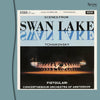







Tchaikovsky - Scene from Swan Lake - Anatole Fistoulari & Concertgebouw Orchestra Of Amsterdam (Edition Japonaise)
ORDER LIMITED TO ONE ITEM PER CUSTOMER
Peter Ilyich Tchaikovsky - Swan Lake, Op.20 (Highlights)
Concertgebouw Orchestra Of Amsterdam
Cello [Solo] – Tibor De Machula
Harp [Solo] – Phia Berghout
Violin [Solo] – Steven Staryk
Conductor – Anatole Fistoulari
1 LP, standard sleeve
Limited edition
Original analog Master tape : YES
Stereo
Heavy Press : 180g
Record color : black
Speed : 33 RPM
Size : 12'’
Stereo
Studio
Record Press : unspecified (Japan)
Label : Esoteric
Original Label : Decca
Recorded 22 - 23 February 1961 in the Concertgebouw, Amsterdam
Recorded by Gordon Parry, Kenneth Wilkinson
Engineered by Tetsuya Kato
Produced by Motoaki Ohmachi, Ray Minshull
Remastered by Masaya Touno
Lacquer cut by Katsutoshi Kitamura
Originally released in 1961
Reissued in May 2023
Tracks :
Side A
- Introduction (Moderato assai)
- Act I - No.1: Scène (Allegro giusto)
- Act I - No.2: Valse
- Act I - No.8: Danse des coupes (Tempo di polacca)
- Act II - No.10: Scène (Modeato)
- Act II - No.11: Scène (Allegro moderato)
- Act II - No.13d: Danses des cygnes (Allegro moderato)
Side B
- Act II - No.13e: Pas d'action (Andante)
- Act III - No.20: Danse hongroise (Czardas: Moderato assai)
- Act III - No.5b: Pas de deux (Tempo di valse - Andante - Tempo di valse - Allegro molto vivace)
- Act III - No.24: Scène (Allegro)
- Act IV - No.27: Danse des petits cygnes (Moderato)
- Act IV - No.29: Scène final (Andante - Allegro agitato)
Reviews :
“The 1961 analogue recording of Swan Lake with the Concertgebouw Orchestra is of outstanding quality – a hi-fi spectacular in its time and comparable with some of today’s best digital presentations. Detail is immaculate and attention is at once gripped by the exciting forte that succeeds the gentle introduction – I noted in particular the realistic bass drum. Steven Staryk provides a superb violin solo in the extensive Pas d’action scene in Act II, and throughout there is expressive playing. Colouration and dynamic contrast abound; how subtly the colours change in the Waltz where the early pizzicatos ring through delicately; the final scene commences with magnificent introductory horn playing, and Fistoulari then builds towards one of music’s great moments as the plaintive theme, first heard as an oboe solo and subtly evident during the drama, blazes into to the major key. This, together with the magnificent orchestral sound of these final pages is spine-chilling.” Antony Hodgson, Classical Source
The Tchaikovsky “Scenes” (Highlights) from his ballet masterpiece Swan Lake give the listener satisfying chunks of the famous scenes played with great virtuosity and tonal splendour. Unlike the Esoteric Dvořák, where I heard only a fleeting moment of congestion in the very loud sections of the opening movement, I heard none of that here. My only digital flinch, yes, I flinch, was a very slight edge to the trumpets a few bars in band 1. If it was the LSO playing, they use what they call “front” on the leading edge of trumpet notes, but the more mellow rotary valve German trumpets the Concertgebouw players use do not echo the LSO style. So, maybe a little digital sound on a few notes. Nothing bothersome and the only giveaway to experienced ears there may be digital in the chain. And nothing to stop this from being an Audiophilia Dream List candidate.
Whither Anatole Fistoulari? Mahler’s son-in-law was always admired by musicians, but the Ukranian/British conductor is having a grand old time displaying his gifts on masterful recuts of his work on Analogue Productions and other leading reissue companies. He was renowned as a ballet conductor and fine orchestral accompanist. Here, you have beautiful interpretive touches of someone intimate with the world of dance. Perfect, danceable tempos. So many conductors who have never set foot in a ballet pit go for speed and effects. Try that in the theatre and the conductor and ballet master will be having a chat.
The timbre of solo instruments is very realistic and scurrying, virtuosic violins are very effective. In “Danse Des Coupes” listen out for the flute section’s virtuosity and later a cute two-piccolo solo with bobbing eighth notes—here’s where the clarity of the recut and vinyl quality show very well; the piccs don’t quite agree on the pitch. It’s very subtle and Fistoulari would not have thrown his baton at them, but heard clearly on this pressing, nonetheless. Also, a brief violin section passage is played on the G string. Marvellous differentiated sound. There are many different subtle analogue tells like that. As such, the entire orchestra tuttis and solo instruments (including the Royal Philharmonic’s Canadian superstar violinist Steven Staryk as Leader) sound straight from the analogue tape with no digital “corruption”.” Audiophilia
Ratings :
Discogs : 4.

